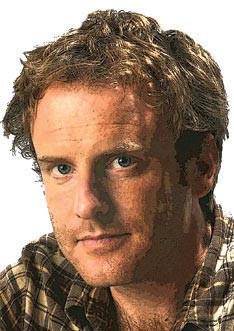The centerpiece of this issue is a mishmash story on deer and deer hunting – the hunting bit as important a cultural touchstone as we have in the rural Northeast, a culture that’s reaffirmed each autumn in camps or wall tents or dark truck cabs at the ends of dirt roads in the hour before shooting light. In memories. In books of old hunting stories we read to our younger selves. Little conversations and actions, dreams and desires that collectively inform who we are as a people. I am a deer hunter – a declarative, foundational statement in the spirit of “I am a Muslim,” or “I am a Catholic.”
The religious analogy is apt, as the quest for game and the quest for God, or something godlike in our lives, overlap. We make annual pilgrimages to the woods where we find grandeur that’s only comprehensible through a spiritual lens. In the ritual pursuit we glimpse something eternal – something right out of the constellations. I’m not proselytizing here. Julian Barnes’s quip, “I don’t believe in God, but I miss him,” springs to mind as a nod to the emptiness that even nonbelievers feel in a world that too often favors the plastic and the analytical over the natural and the spiritual. For many of us, hunting helps to fill this emptiness. If you read hook and bullet magazines, which I do, you will learn that if you want to shoot more deer, you need to stop hunting in the same spot every year. This is such good advice, yet it so misses the point of why so many of us migrate to the same deer stands on opening morning each year, which is for the ritual. For the consistency – for what remains the same. The comfort of the familiar, the reassuring site of trees we know intimately, the enduring presence of ancient rites. Some of the language in that last sentence was cribbed directly from Unitarian pastor Galen Guengerich’s thoughts on why people go to church: “the virtue of staying put and staying true, of choosing again what we chose before.” There is a deep connection between the two processes.
Think about the virtue of staying put and staying true when you’re out on the deer stand this year. Roll it around in your mind and see how it applies to so many things that are good about rural life. Notice that places are rural in part because of the simple values of the people who live there who never spoiled the place to begin with. Think about it as you read about the Lathrop family on page 52 – seven generations in the timber business.
See it in Bob Kimber’s folksy meditation on last winter’s weather on page 71; we gave him 800 words, but he probably could have written 8,000. See it in the subtle seasonal cues in the Calendar on page 4, then see it in Virginia Barlow herself – in the fact that she invented this platform and for 25 years has stayed on to share her observations with readers. A quarter-century of understated elegance and wisdom that has been handed down and that you and I have been lucky enough to receive.
Think about how culture – not just hunting culture, but logging culture, farming culture – created and fosters our rural landscape. Think about how this culture is built on rural social ideals like thrift; like resistance to change; like exasperation with quote-unquote experts when their buzzwords and analytics preclude an organic grasp of the whole. Rural advocate Wendell Berry has spent five decades pointing out that our environmental ills are brought on by a diminishment of rural ideals – a “crisis of culture,” he calls it. In 1977, he wrote about how a land ethic is created: “Such an attitude does not come from technique or technology. It does not come from education: in more than two decades in universities I have rarely seen it. It does not come even from principle. It comes from a passion that is culturally prepared – a passion . . . that is handed down to young people by older people whom they respect and love. When we destroy the possibility of that succession, we will have gone far toward destroying ourselves.”
Come back to the image of a hunter in a dark truck at the end of a dirt road, toe-tapping as she waits for shooting light. I want you to notice the soulful piece in this moment; notice, too, how she’s a stitch in the fabric that helps hold her rural place together, a rural place that’s a stitch in the fabric that holds the whole planet together. But she doesn’t need to carry that weight in her pack. The first light is leaking from the eastern horizon. There’s three inches of good tracking snow, and she has the whole day ahead of her. I wish her a clear head and a straight shot.


